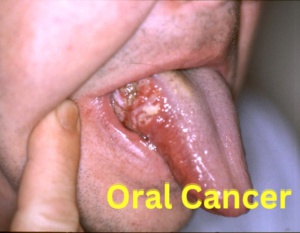Head and Neck Cancer Treatment in Pune – Expert Care at Prolife Cancer Centre
Why choose Prolife Cancer Centre for your oral cancer care?
Prolife Cancer centre is one of the best Hospital for Oral Cancer Treatment in Pune. At Prolife Cancer Centre, your care for oral cancer is personalized. Your cancer care team, will communicate closely and work together, and with you, to customize your care, including the most advanced therapies with the least impact on your body.
We offer new strategies to maintain dental and oral health treatment. Our highly specialized speech pathologists and therapists are among the most experienced in the nation, particularly in the newest methods of voice restoration and speech.
And at Prolife Cancer Centre, you’re surrounded by the strength of India’s largest and most experienced comprehensive cancer centre, which has all the services needed to treat the whole person – not just the disease.


Dr. Sumit Shah – Cancer Specialist in Pune
Dr. Sumit Shah, a renowned Chief Consultant, Surgical Oncologist, and Robotic surgeon, is the founder of Prolife Cancer Centre & Research Institute. This state-of-the-art medical facility provides a comprehensive range of integrated cancer treatment options under one roof. Dr. Shah has pursued a super-specialty course in Surgical Oncology at the Cancer Centre Welfare Home and Res. Institute in Kolkata, where he was recognized as the Best Outgoing Cancer Surgeon. He is among the few cancer specialist in Pune who possess this recognized degree, demonstrating his exceptional expertise in the field of surgical oncology.
What is Head and Neck cancer?
Head and neck cancer is an appropriate term used for a range of cancers that start in the head and neck of the body. This region includes the mouth, tongue, palate, jaw, salivary glands, tonsils, throat (pharynx), voice box (larynx), nose and sinuses. Most of the head and neck cancers initiate in the cells that surround the moist surfaces of the mouth, nose or throat (squamous cells). These are called squamous cell carcinomas (SCC), they can also occur in other parts of the body.
Some head and neck cancers start in the glandular cells. Many of these are called adenocarcinomas.
Types of head and Neck cancer:
There are five main types of head and neck cancer:
- Oral cavity
- Pharynx
- Larynx
- Nasal cavity and paranasal sinuses
- Salivary glands.
1. Mouth (Oral cavity): The mouth, also termed as the oral cavity, includes the lips, gums, and tongue. The muscles at the base of the tongue continue into the upper throat (oropharynx). Cancer that starts in the mouth is also called as oral cancer.
2. Throat (pharynx): Throat is also called the pharynx, is a hollow tube that starts behind the nose and leads to the food pipe (esophagus) and the windpipe (trachea). Throat Cancer can affect the three parts of the pharynx:
a. Nasopharynx – the upper part which is behind the nose and above the soft palate; cancer starting in this area is called nasopharyngeal cancer.
b. Oropharynx– the middle part which is the area from the soft palate and tongue base to the back of the mouth, including the tonsils; cancer developed in this area is called oropharyngeal cancer.
c. Hypopharynx – the lower part, behind the voice box (larynx); cancer starting in this area is called hypopharyngeal cancer.
3. Larynx(Voice box): The voice box, also called the larynx, is a short passageway that connects the lower part of the throat (hypopharynx) with the windpipe (trachea). Cancer that starts developing in the larynx is called laryngeal cancer. The larynx contains the vocal cords also termed as (glottis), which vibrate when the air passes through them to produce the sound of your voice.
4. Nasal cavity and paranasalsinuses: Nasal cavity is the large, hollow space located inside the nose. This space warms, moistens and filters the air that you breathe. The bones around the nasal cavity have a small bunch of air-filled spaces called the paranasal sinuses. These sinuses directly affect the sound and tone of your voice.
There are four pairs of paranasal sinuses:
1. Maxillary sinuses – under the eyes and in the cheek area
2. Frontal sinuses – behind the forehead
3. Ethmoid sinuses – above the nose and between the eyes
4. Sphenoid sinuses – behind the nose and between the eyes.
5. Salivary glands: The salivary glands make saliva, which keeps the mouth moist, helps you swallow food and protects the mouth against infections. There are three major salivary glands:
- Parotid gland – in front of the ears
- Sublingual gland – under the tongue
- Submandibular gland – under the jawbone.
There are hundreds of smaller glands throughout the lining of the mouth and throat, called as the minor salivary glands. Most salivary gland cancers affect the parotid glands. Rarely the submandibular and sublingual glands are affected.
Head and Neck Cancer Types
Book Appointment
Quick Contact
- Address 557A1/15C Gultekadi, Market Yard Pune, Maharashtra 411037
- Email social.prolife@gmail.com
- Phone +91-9607079019, +91-9607079029
Symptoms of head and neck cancer
- Mouth pain or pain when swallowing
- A persistent sore or swelling in the mouth
- Unusual bleeding or numbness in the mouth
- Red or white patches on the gums, tongue or mouth
- Bad breath
- Changes in speech or difficulty pronouncing words.
- Difficulty chewing or swallowing food, difficulty moving the tongue or limited chewing
- Throat pain or difficulty swallowing
- A persistent sore throat or cough
- Coughing up bloody phlegm
- Bad breath
- Weight loss
- Voice changes or hoarseness
- 3.Larynx(Voice box)
- Swelling or a lump in the neck or throat
- A persistent change in the sound of your voice, including hoarseness
- Difficulty swallowing or pain when swallowing
- Constant coughing
- Difficulty breathing
- Decreased sense of smell
- A persistent blocked nose, particularly in one nostril
- Frequent nosebleeds
- Excess mucus in the throat or back of the nose
- Frequent headaches or sinus pressure
-
- Swelling or a lump near the ear, jaw, lip, or inside the mouth
- Different appearance on each side of the face or neck
- Difficulty swallowing or opening
Diagnosis of Head and Neck Cancer

If you notice any symptoms, consult your general practitioner. To diagnose a head and neck cancer, your general practitioner or dentist will do some general tests and then refer you to a specialist for additional medical tests. Depending on your symptoms, tests will include examinations, tissue sampling (biopsy) and imaging tests. You may also have blood tests.
Diagnostic tests for head and neck Cancer:
- Physical examination
- Nasendoscopy
- Laryngoscopy
- Biopsy
- Testing lymph nodes
- X-rays
Stages of Head and Neck Cancer
Staging is a way of describing where the cancer is located, if or where it has spread, and whether it is affecting other parts of the body.
Doctors use diagnostic tests to find out cancer’s stage, so staging may not be complete until all of the tests are finished. Staging is a process that tells a doctor if cancer has spread and if it has, how far. It depends on the severity of the original tumor, and whether cancer has spread to lymph nodes or distant parts of the body. Staging is an important step in evaluating treatment options. Staging is slightly different for each specific type of head and neck cancer.
Stage 0
Description
- Cancer found only in squamous cells where it began. Called “carcinoma in situ,” meaning it has not yet invaded nearby tissue.
Treatment
- Surgery.
Stage I
Description
- Cancer has invaded nearby tissue but has not yet spread to lymph nodes or other parts of the body.
Treatment
- Surgery and/or radiation therapy.
Stage II
Description
- Cancer has grown even deeper into nearby tissue but still has not spread to lymph nodes or other parts of the body.
Treatment
- Surgery, radiation therapy, chemotherapy (at times), or a combination of these treatments.
Stage III
Description
- Cancer has either grown much deeper into surrounding tissue or started to spread to one lymph node.
Treatment
- Surgery, radiation therapy, chemotherapy, or a combination of these treatments.
Stage IVa
Description
- Cancer has grown completely through surrounding tissue into adjacent structures (such as tissue, cartilage, bone, or nerves) and may have spread to a few lymph nodes.
- Cancer has spread to more than one lymph node.
Treatment
- Surgery, radiation therapy, chemotherapy, or a combination of these treatments.
Stage IVb
Description
- Cancer has grown completely through surrounding tissue and invaded major structures (such as the carotid artery or skull base) and may have spread to the lymph nodes.
- OR
- Cancer has spread to a large lymph node.
Treatment
- Surgery, radiation therapy, chemotherapy, or a combination of these treatments.
Stage IVc
Description
- Cancer has spread (metastasized) to other parts of the body
Treatment
- Generally not curable but chemotherapy may be administered to decrease symptoms or delay the progression of cancer.
Treatment of Head and Neck Cancer

Head and neck cancers vary a lot in terms of where they arise as well as the specific type. Treatment for head and neck cancers will depend upon the location and type of cancer as well as the person’s individual features and risk factors.
- Where the cancer is located
- What stage the cancer is in
- How old you are
- Your general health
1.Surgery –
Your doctor might zap cancer with a laser or take out the tumor and some of the healthy tissue around it. If there’s a chance cancer has spread, your doctor might take out some of the small glands called lymph nodes in your neck.
2.Radiation –
Your doctor might use X-rays or other energy particles to kill the cancer cells. Some of the side effects include:
- Pain or trouble swallowing
- Changes in your voice
- Loss of appetite
- Red or irritated skin
- Thick spit.
3.Chemotherapy (“Chemo”). You’ll be given medication to stop the cancer cells from growing and dividing, which should destroy them. The following are possible side effects:
- Feeling tired
- Infection
- Feeling sick to your stomach
- Hair loss
- Loss of appetite
- Diarrhea
Follow up of Head and Neck Cancer

Head and neck carcinoma (HNC) is the sixth most common cancer worldwide. In general, the proper assessment of any cancer surveillance program must consider the recurrence rate, the optimal method for surveillance, and whether earlier detection of recurrence leads to increased rates of successful salvage treatment and improved survival. Follow-up in HNC patients has several goals: to assess clinical response and late effects of treatment; to detect recurrences and second cancers at an early stage, and to restore nutritional and psychosocial status.
Follow-up visit should include a physical examination of cranial nerve examination, an assessment of vocal, breathing and swallowing functions, and a systemic pain evaluation using a visual analogic scale.
Follow-up protocols should avoid unnecessary investigations that may cause morbidity or discomfort to the patient and may have significant cost implications without impact on survival.

